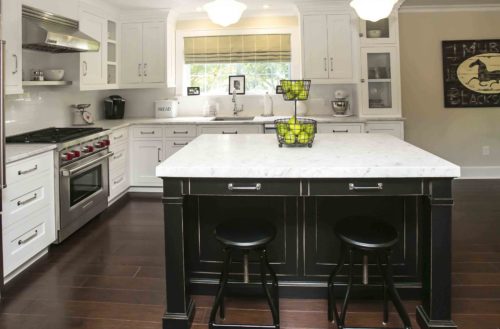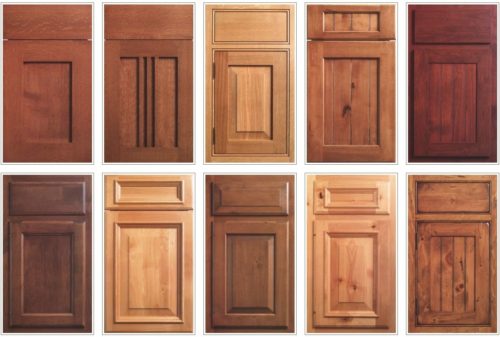Planning a Kitchen Remodel? Consider your Kitchen Island
By / October 19, 2016 February 22, 2023When designing your kitchen, it is really important to take your most frequent kitchen island activities into consideration. Some may say that cooking, cleaning and eating are the only activities going on in their kitchen. There are many more activities throughout your kitchen that you may not take notice to.
While entertaining guests or gathering with family, the kitchen island is where the majority of the activity takes place. The Kitchen island acts as a meeting place where people gather around to enjoy appetizers, have a conversation, prep food items, host a cooking lesson, create a craft, enjoy a meal, etc. But what are the most frequent kitchen island activities?

Most Frequent Kitchen Island Activities
According to RICKI – The Kitchen Think Tank
- Cutting up food.
- Mixing ingredients.
- Conversations with family and friends.
- Serving food.
- Eating.
There are a wide variety of kitchen accessories to accommodate the kitchen island activities in your home. Customized knife drawers keep them safe and secure in a drawer rather than out on the counter where everyone is gathered around. We often utilize pull out cutting boards, this helps with saving counter space when you are prepping food you can cut food off to the side rather than directly on the counter allowing more counter space. Custom spice drawers make it easy to access all of your cooking ingredients with one hand. You don’t need to reach over heads or take extra time to pull out a ladder to access your spices. Our double-level cutlery drawer allows you to combine storage of utensils and mixing spoons or cooking utensils. This makes all of your utensils needed for cooking and mixing easily accessed in one place.
All of these kitchen accessories can be incorporated into your kitchen island. Incorporating these accessories will create more space for your kitchen activities as well as keep you organized. For more storage and accessory options click here. Follow us on Houzz for more inspiration.
Cabinetry Terms You Should Know
By / October 5, 2016 March 20, 2023Kountry Kraft offers a variety of custom kitchen cabinets, and with this variety comes a lot of cabinetry terms that homeowners should be familiar with to select the right product. To make custom cabinetry unique for every customer, we supply an array of options for door styles, wood species, and wood finishes.
Cabinetry Terms To Know
Door Styles
There are 3 main types of cabinet doors that can be further enhanced in different ways.
- Inset Cabinet Doors – a popular style in the early 1900’s. The doors are mounted inside the frame of the box making the hinges visible when the door is shut.
- Partial Overlay Cabinet Doors – these doors are mounted over the face of the box, meaning parts of the frame and hinges may be visible.
- Full Overlay Cabinet Doors – this door style covers the whole face of the box which means very small gaps between different doors. This creates a consistent and continuous appearance.

Wood Species
Choosing your wood species is important when your cabinetry is not going to be painted. This is because each wood species has natural characteristics.
- Red Oak – light to medium brown with a reddish cast.
- Distressed Knotty Pine – large knots and defects which make a striking pattern.
- Cherry – light pinkish brown, darkens to a medium reddish brown.
- Rustic Cherry – same as cherry but with more mineral streaks and different sized knots.
- Hard Maple – off white to light brown in color with a golden hue.
- Hickory – open grained rustic hardwood, colors vary from near white to light brown.
- Quarter Sawn White Oak – pale brown to dark brown with a greenish gray tinge and very straight grain.
- Walnut – color may vary from light grey-brown, to a deep rich chocolate brown.
- Alder – tends to be light tan to reddish brown; darkens and reddens with age.
- Rustic Alder – same as Alder but contains knots of all sizes including cracks/holes.
Finishes
Finishes bring your cabinetry to life and can also protect your wood from different external elements.
- Natural – the original characteristics of your chosen wood species.
- Paint – paint will completely cover the wood grain look.
- Glaze – glaze will add definition to the wood grain look because it is semi-transparent.
- Stain – enhances the wood grain patterns.
- Paint with glaze – glaze will darken your paint color.
- Stain with glaze – glaze will highlight the look of a stain finish.
- Metal fusion finish – includes brass, bronze, copper, white gold, oil rubbed bronze, iron, nickel silver, and stainless steel finishes.
- Distressing wood finish – gives the wood an aged and rustic appearance.
- Weathered grain finish – lightly distressed to replicate age and wear.
Understanding the basic terminology outlined above is the first step on the path to a successful kitchen design. For design inspiration, check out our gallery of completed custom kitchens here.
